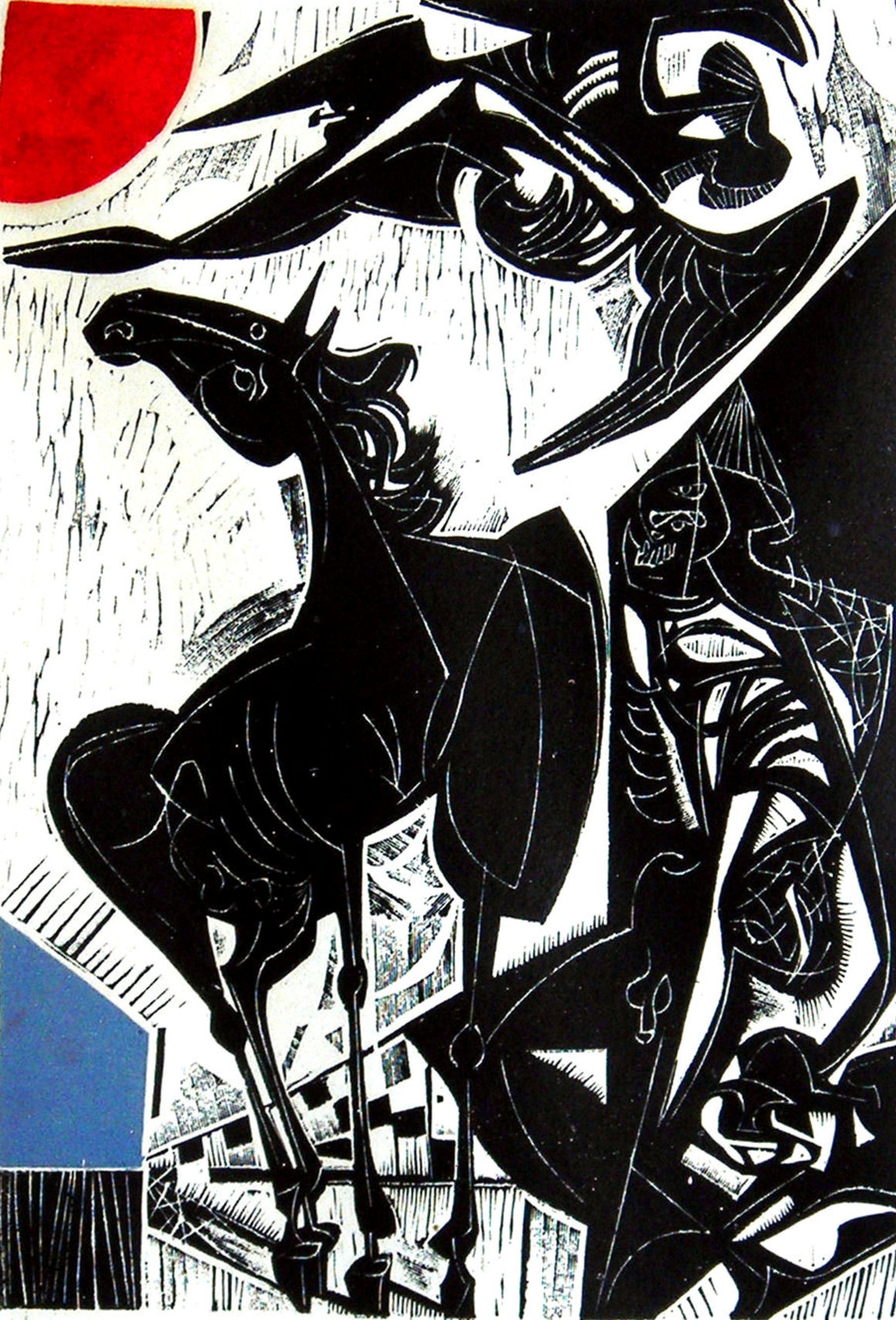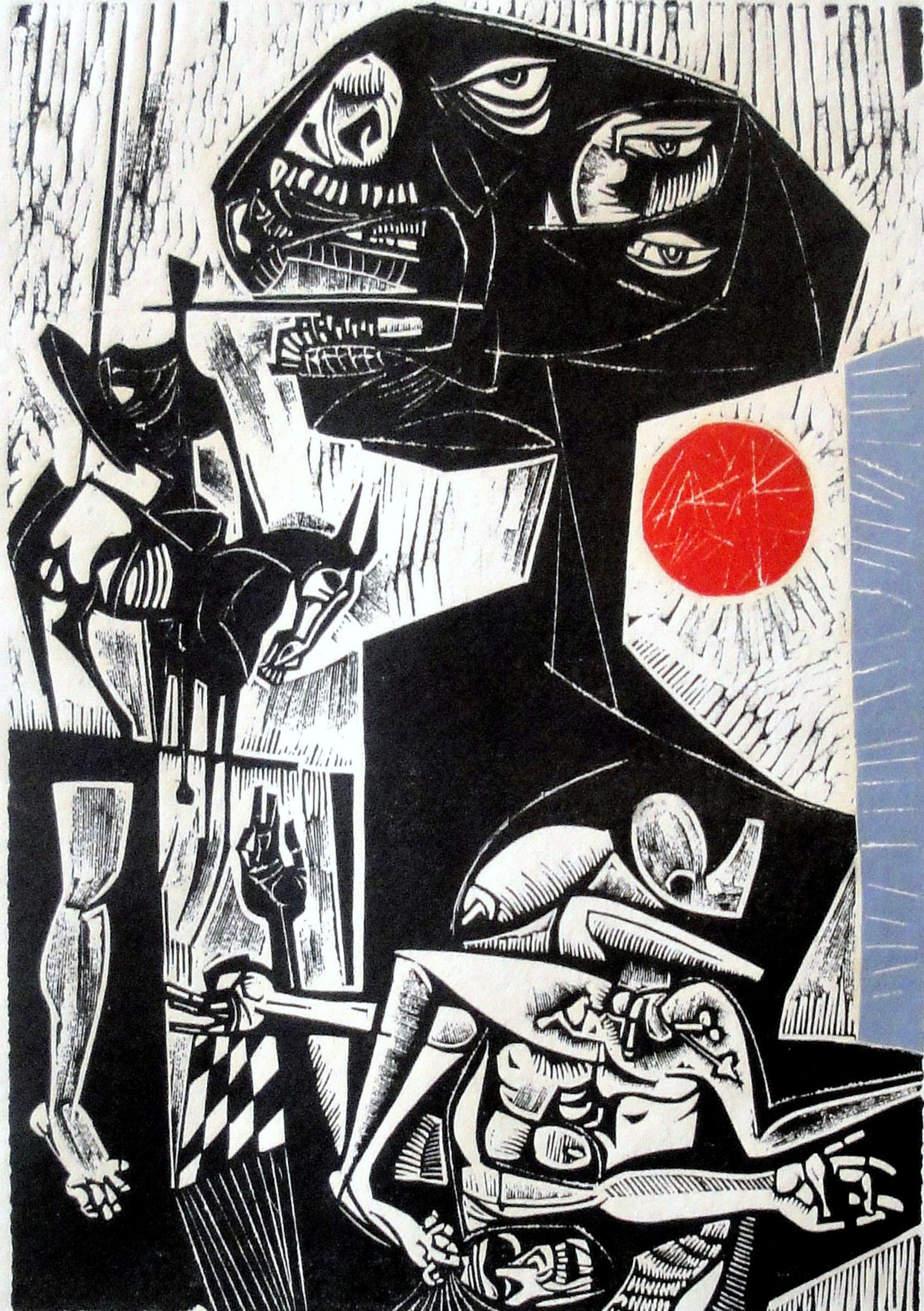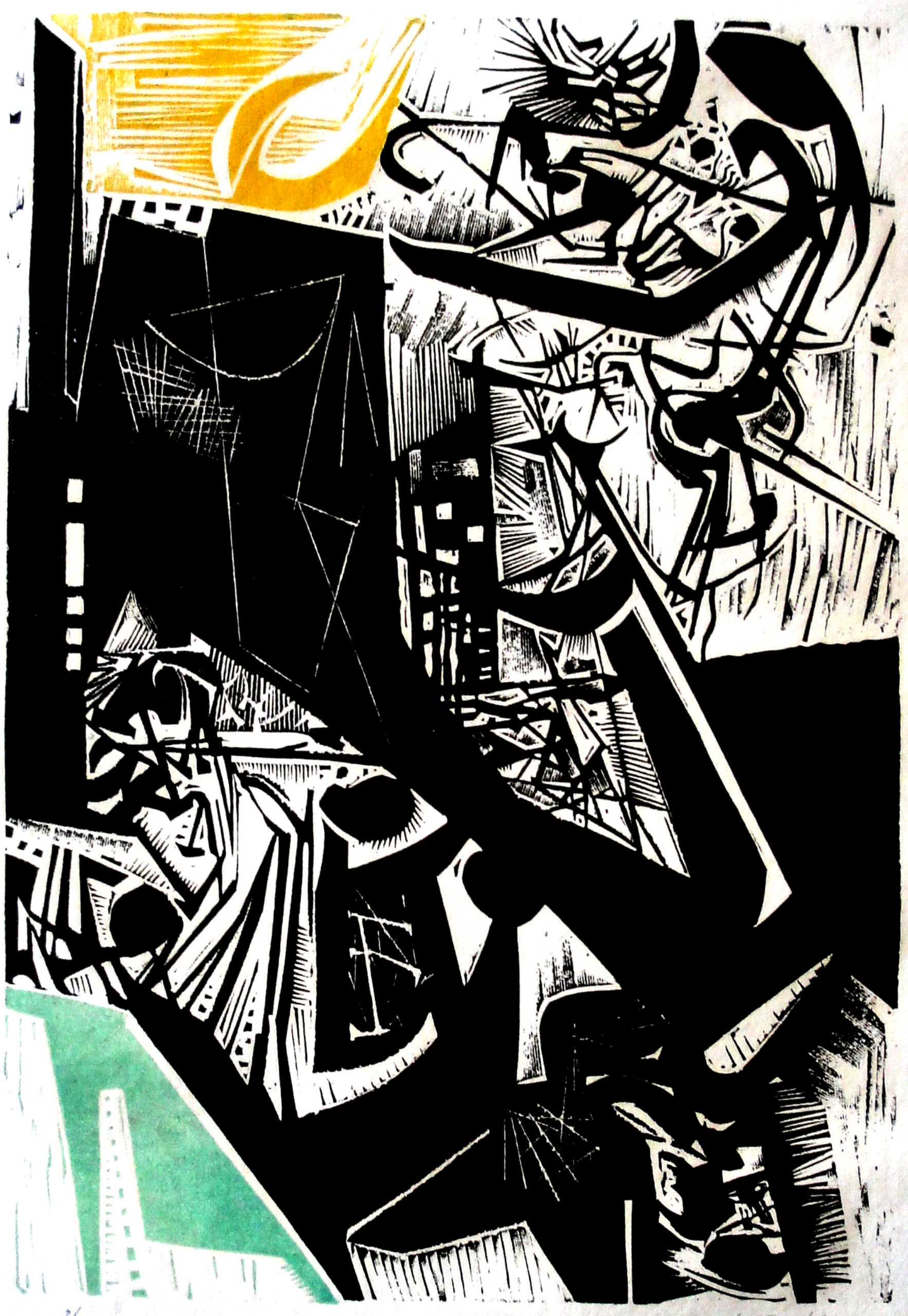
29 Mar Vincent Hložník: Between War and Dream
On view March 29–August 16, 2015
In the dystopic universe of Vincent Hložník: Between War and Dream, detached human limbs, tangled corpses, monstrous figures assembled from eyes and teeth, the Angel of Death, and threatening flanks of silhouetted and stylized archaic warriors signal unspecified danger. Angles and voids activate the space and create an instability marking the very real threat of annihilation, whether from war or nuclear arms. Hložník’s approach to art was profoundly affected by his time as a student in Prague during World War II where he witnessed Nazi atrocities. This experience led him to address themes of war, isolation and human suffering in his work.

Vincent Hložník (Slovak, 1919-1997), Untitled, from Dreams, 1962, linocut, 23 5/8 X 16 3/8 inches. HHAR 1407. The Art Collection at The Hebrew Home at Riverdale.
Hložník is a key figure in modern Slovak art as both a teacher and artist, and had an immeasurable impact on its direction, particularly in the graphic arts. He established the highly influential Department of Graphic Art and Illustration at the Academy of Fine Arts in Bratislava after he joined the faculty in 1952. From this department emerged what is referred to as The Hložník School—a generation of Slovak graphic artists who approached art with a “deeply humanist experiencing of the world, on the border of reality and dream, of drama and poetry,” as described by Ľudovít Petránsky, author of a monograph on Hložník. They often exhibited together as a group under the same name. Some of the most important figures in Slovak art in the latter half of the 20th century emerged from this school.
After 1948 when the country fell under Communist authority as a satellite state of the Soviet Union, modernist styles in all the arts were officially banned. All art had to adhere to the tenets of Socialist Realism, a figurative style that glorified Soviet ideals. Also described as “official art,” it was the only style allowed in Eastern Bloc countries. However, some modernist artists, including Hložník, for most of his career, managed to innovate and find success even within the confines of official art, surviving the tug-of-war over cultural policies between hardline Stalinists and reform-minded liberals. Around 1962—the same year the prints on view were created—Hložník was serving as chancellor at the Academy and exhibiting at major venues both domestically and abroad.

Vincent Hložník (Slovak, 1919-1997), Untitled, from Dreams, 1962, linocut, 23 5/8 X 16 3/8 inches. HHAR 1414.The Art Collection at The Hebrew Home at Riverdale.
About the Artist
Hložník was born in 1919 in the small Slovak town of Svederník and studied drawing in secondary school. He went on to attend the School of Applied Arts in Prague in 1937. Just two years later, on March 15, 1939, German troops occupied the city. Hložník remained in Prague, and was profoundly affected by the daily atrocities that were occurring around him. His ongoing commitment to social justice is evidenced by his participation as one of 24 signatories representing important Slovak cultural figures who endorsed the “Declaration on the Deportation of the Jews” a proclamation published in 1987, which denounced antisemitic measures against Slovak Jews during World War II. Hložník died in Bratislava in 1997.
Hložník’s work has been widely exhibited and collected throughout the Slovak Republic and was shown during his lifetime in solo exhibitions in Cuba, Egypt, Germany, Hungary, Mexico, Switzerland and the U.K., among other countries. At the 1958 Venice Biennale, Hložník was one of three artists—the other two were Antonio Tapies of Spain and Kenneth Armitage of the U.K—to receive an award from the David E. Bright Foundation of Los Angeles. It was the first time in the history of the Biennale that an American organization had presented an award for which artists of any country could be eligible.
![]() This exhibition is supported, in part, by public funds from the New York City Department of Cultural Affairs in partnership with the City Council.
This exhibition is supported, in part, by public funds from the New York City Department of Cultural Affairs in partnership with the City Council.
Featured image: Vincent Hložník (Slovak, 1919-1997), Untitled, from Dreams, 1962, linocut, 23 5/8 X 16 3/8 inches. HHAR 1421. The Art Collection at The Hebrew Home at Riverdale.

